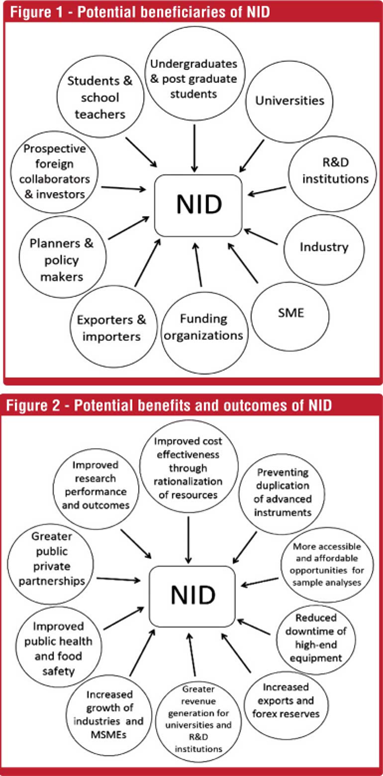The National Science Foundation is the premier national institution mandated to promote science, technology and innovation for socio-economic development of the country. In keeping with its mandate and in order to advance a digital economy in Sri Lanka, the NSF recently embarked upon several novel initiatives. They included, among others, establishment of a global digital platform (GDP) to harness Sri Lankan expatriate scientists, technologists, entrepreneurs and professionals for national development; construction of a national instrument database (NID) to promote R&D, industrial growth and exports; and taking steps for establishing a national digital library to provide academics and scientists with increased user-friendly access to scientific journals and databases in a cost-effective manner.
Sri Lanka has over 20 State-owned higher education institutions, a comparable number R&D institutions, and several public sectors institutions, such as Sri Lanka Atomic Energy Board, Sri Lanka Standard Institute and Board of Investment, which collectively possess an immense instrument base including high-end equipment, most of which has been purchased using public funds. Much of this equipment is meant to be used on a 24x7 basis, as is done in many parts of the world. However, due to compartmentalization and fragmentation of institutions, the “possessive attitude” of many scientists, the lack of a sharing culture, and the absence of an institutional policy and mechanism for providing analytical and testing services to external institutions and persons, many expensive items of advanced equipment and instruments purchased operate far below their capacity.
Thus, they remain underutilized and inaccessible to stakeholders who need to analyze and test food and beverages, soil, industrial effluents, water and air, to name but a few. Moreover, given the rapid advances in the field of analytical technology, some equipment becomes obsolete relatively fast. Underutilization of such equipment, therefore, constitutes a decided cost and waste of public funds, especially when purchased using limited foreign exchange.
On the other hand, providing such a service to stakeholders for a reasonable fee, besides generating revenue for the institution and helping to make the most of the hitherto underutilized instruments, will meet a longstanding need of industries, including micro, small and medium enterprises, which neither have the capacity to invest in expensive equipment nor the competency to maintain it in order to carry out the requisite tests before releasing their products to the local, regional and global markets.
Therefore, the NSF took steps to develop a user-friendly, state-of-the-art data base of analytical, testing and research equipment available in state higher education and R&D institutions with a view to providing much needed services and support to its stakeholders both in the public and private sectors in a cost-effective manner. This will undoubtedly constitute another landmark in the annals of the almost 55-year journey of the NSF in affording a new momentum and boost to science, technology and innovation (STI), industry and exports of the country.
This database will contain information on the type of equipment, its model, year of manufacture, analytical and testing capabilities, location by means of a Google map, turn-around time for sample analysis, cost of analysis, contact details, etc. It is constructed in a user-friendly manner so that even a non-technical person can easily access it by indicating either the test required, for example aflatoxin, E. coli bacteria or heavy metal, or the name of equipment needed. This will enable him or her to find the closest place available for sample analysis in a cost-effective and time-efficient manner. For instance, an industry, SME or a farmer in Mulative may not need to send samples to Colombo for analysis but could get that done at the University of Jaffna or the University of Vavuniya, thereby avoiding a lot of hassle as well.
The NID will have information on analytical and testing facilities and parameters relevant to a wide range of samples, including ones of soil, water, air, food and beverage products, industrial pollution, food contamination, food safety, food hygiene and material.

